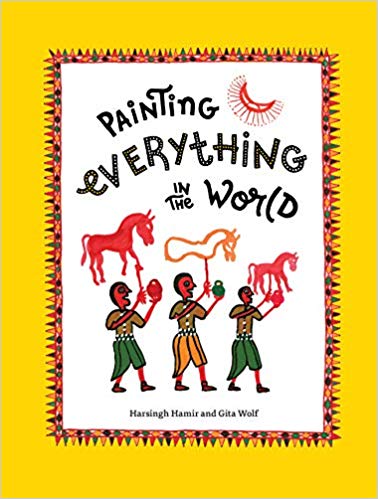Apart from author Gita Wolf, the two books by Tara have little in common. One is a children’s introduction to Pithoro, a Rathva ritual art form; the other is a DIY book for children on traditional toys. Yet, such a reduction would be unfair to the two books. In the grand scheme of things, both the books are about the joy of creation, about our everyday reality and using material from quotidian life in the act of creation. It would also be unfair to reduce the two books to a single sentence because of the earthy illustration of Harsingh Hamir and funky graphics of Priya Sundaram. It is difficult to translate the complexity of a Pithoro in words.
For any person who has witnessed an original Pithoro, it is difficult to imagine the miniature figures in earthy reds, black and brown to be representative. However, once one realizes that this is a picture book for children who may have very little understanding of the lifestyle of Indian villages, much less the world of the Rathvas of Gujarat or Madhya Pradesh, the entire perspective seems to change. We understand that Gita Wolf is using Hameer’s illustrations to describe the complex world of Rathva imagination. The book follows a simple plot, in fact, Wolf seems to have been inspired by the vrata katha tradition for her plot line:
The village wakes up to prepare for a feast.
It is a grand celebration.
The next morning the village wakes up to a disaster with dried wells, sick people and dead livestock.
They consult the village elder, who reminds them that must have omitted the worship of their village deities, Pithoro & Pithori, in the form of horses.

